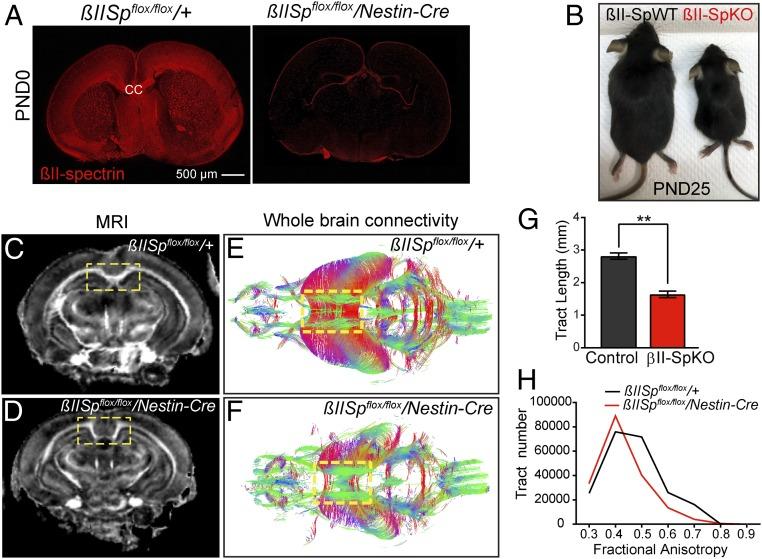
βII-spectrin is the generally expressed member of the β-spectrin family of elongated polypeptides that form micrometer-scale networks associated with plasma membranes. We addressed in vivo functions of βII-spectrin in neurons by knockout of βII-spectrin in mouse neural progenitors. βII-spectrin deficiency caused severe defects in long-range axonal connectivity and axonal degeneration. βII-spectrin-null neurons exhibited reduced axon growth, loss of actin-spectrin-based periodic membrane skeleton, and impaired bidirectional axonal transport of synaptic cargo. We found that βII-spectrin associates with KIF3A, KIF5B, KIF1A, and dynactin, implicating spectrin in the coupling of motors and synaptic cargo. βII-spectrin required phosphoinositide lipid binding to promote axonal transport and restore axon growth. Knockout of ankyrin-B (AnkB), a βII-spectrin partner, primarily impaired retrograde organelle transport, while double knockout of βII-spectrin and AnkB nearly eliminated transport. Thus, βII-spectrin promotes both axon growth and axon stability through establishing the actin-spectrin-based membrane-associated periodic skeleton as well as enabling axonal transport of synaptic cargo.
Citation: Lorenzo, D. N., Badea, A., Zhou, R., Mohler, P. J., Zhuang, X., & Bennett, V. (2019). βII-spectrin promotes mouse brain connectivity through stabilizing axonal plasma membranes and enabling axonal organelle transport. Proceedings of the National Academy of Sciences of the United States of America, 116(31), 15686–15695. https://doi.org/10.1073/pnas.1820649116
